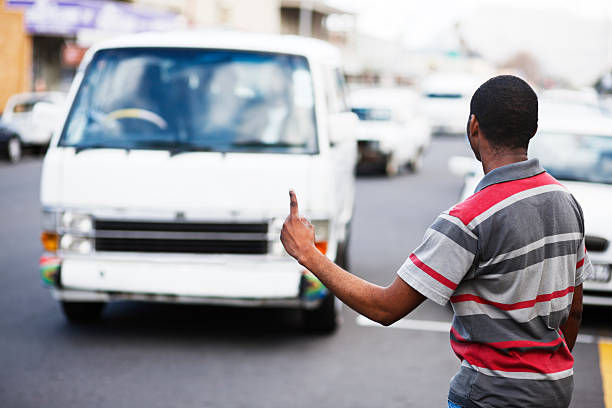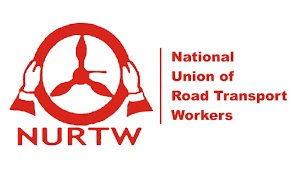The Crucial Role of Taxi Routes in Global South Economies
- sisandasocials
- Oct 27, 2023
- 3 min read
Updated: Nov 10, 2023

In this blog, I argue that without informal taxi routes and transportation networks, economies in the global south would be dysfunctional and unable to achieve sustainable growth. Informal taxi routes serve as a critical planning element in modern-day land use planning and economic development, yet they remain inadequately understood and integrated with formal systems and structures (Lucas & Porter, 2016).
The global south, consisting of diverse regions in Africa, Latin America, Asia, and other emerging economies, faces unique challenges in providing affordable and accessible transportation options for their rapidly urbanizing populations (Bedi, 2016). The lack of comprehensive and well-connected public transport systems often leaves a void that informal taxi routes step in to fill. These routes encompass a wide array of transportation modes, including minibuses, shared taxis, auto-rickshaws, and motorcycle taxis, and cater to the mobility needs of millions of urban residents daily. They form an essential component of urban transportation networks, offering last-mile connectivity, flexibility, and affordability, particularly in areas underserved by formal public transport (Cavoli et al, 2022).
Land use planning and economic development in the global south are intrinsically intertwined with informal taxi routes. These networks shape the spatial organization of cities, impacting where businesses are established, where informal settlements develop, and how urban land is utilized (Agyemang & Morrison, 2018). The accessibility provided by these routes is a vital catalyst for economic activities. They enable people to participate in the urban labour force, encouraging entrepreneurship, and facilitating market access, ultimately stimulating economic growth (Dyachia & Permana, 2017).
However, the integration of informal taxi routes into formal systems and structures has been fraught with challenges. The lack of in-depth research on this topic has hindered the urban planning and policy-making processes. The lack of knowledge surrounding the dynamics of informal transport networks hinders the creation of effective policies, regulations, and infrastructure investments to support their operation (Goletz et al, 2017). As a result, informal taxi routes often exist in a legal and regulatory gray area, which can lead to contentious relationships with formal authorities and transport stakeholders (Goletz et al,2017). Despite their significant role, informal taxi routes are gold mines that are often surrounded by contestation and conflict (Evans et al, 2018). This is evident in the constant struggles between informal operators, formal transport providers, and municipal governments. The competition for passengers and routes frequently leads to disputes, confrontations, and, at times, violence. The tensions arise from a lack of clear regulations, formal recognition, and coordination among stakeholders (Uteng and Lucas, 2018).
References
Agyemang, F.S. and Morrison, N., 2018. Recognising the barriers to securing affordable housing through the land use planning system in Sub-Saharan Africa: A perspective from Ghana. Urban Studies, 55(12), pp.2640-2659.
Bedi, T. (2016). Taxi Drivers, Infrastructures, and Urban Change in Globalizing Mumbai. City & Society, 28(3), 387-410.
Dyachia, Z.S., Permana, A.S., Ho, C.S., Baba, A.N. and Agboola, O.P., 2017. Implications of present land use plan on urban growth and environmental sustainability in a Sub Saharan Africa City. International Journal of Built Environment and Sustainability, 4(2).
Evans, J., O'Brien, J., & Ch Ng, B. (2018). Towards a Geography of Informal Transport: Mobility, Infrastructure, and Urban Sustainability from the Back of a Motorbike. Transactions of the Institute of British Geographers, 43(4), 674-688.
Heinrichs, D., Goletz, M., & Lenz, B. (2017). Negotiating Territory: Strategies of Informal Transport Operators to Access Public Space in Urban Africa and Latin America. Transportation Research Procedia, 25, 4507-4517.
Lucas, K., & Porter, G. (2016). Mobilities and Livelihoods in Urban Development Contexts: Introduction. Journal of Transport Geography, 55, 129-131.
Oviedo, D., Cavoli, C., Levy, C., Koroma, B., Macarthy, J., Sabogal, O., ... & Jones, P. (2022). Accessibility and Sustainable Mobility Transitions in Africa: Insights from Freetown. Journal of Transport Geography, 105, 103464.
Uteng, T.P. and Lucas, K. (Eds.). (2018). Urban Mobilities in the Global South. London: Routledge.



This is very good work, Sisanda. Your argument was focused and showed me the complex relationship between formality and informality in the transport sector. It seems you have a passion and interest in the topic that is expressed intelligently in the work. It would have been enhanced by photographs and videos of the cities you examined in Nigeria particularly, but that is a relatively small point f critique in what has been an otherwise well-constructed and presented blog. The reference material you used was well connected to theme and argument and I learned something new about cities I thought I knew well.